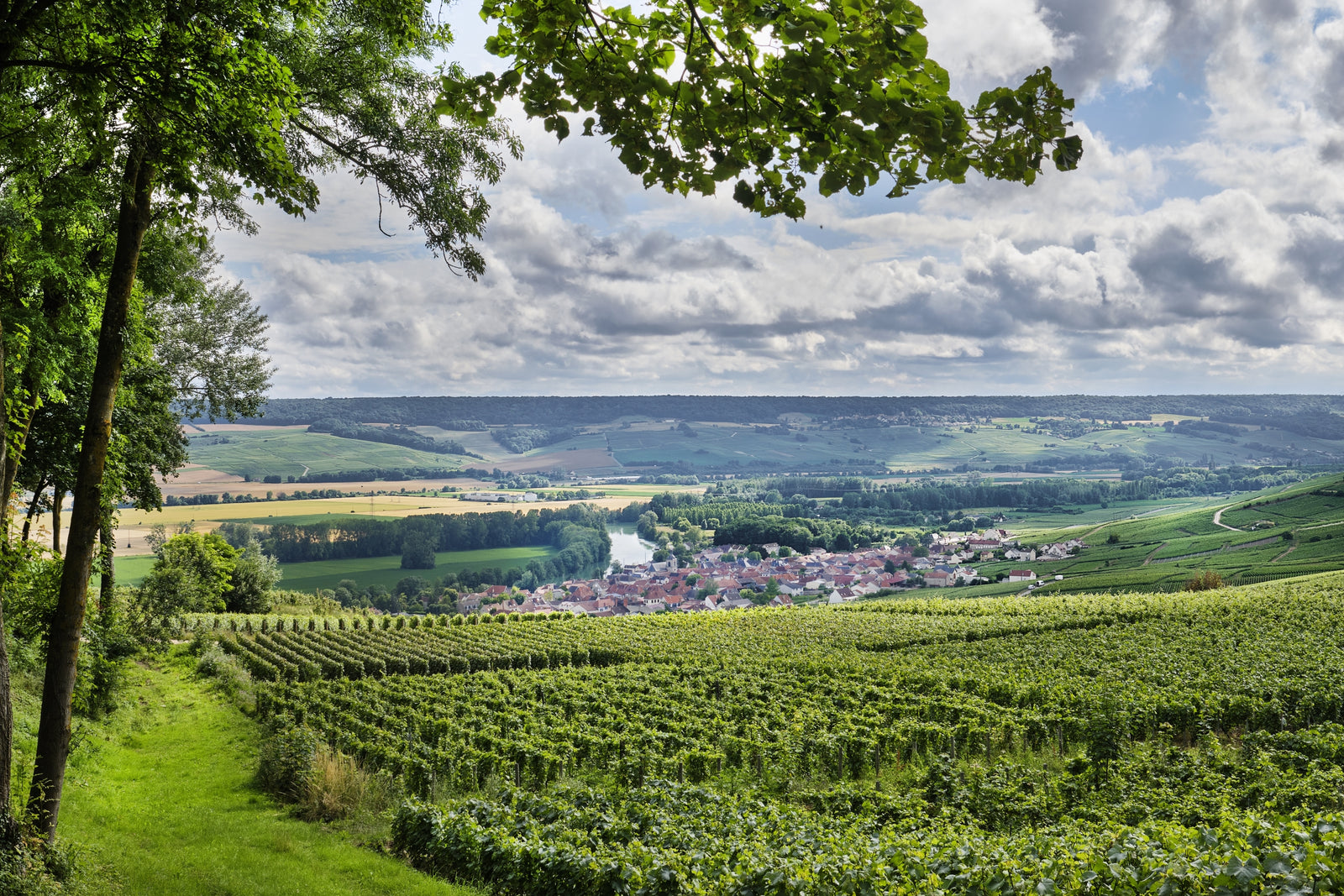We Just Say Meunier
As you likely already know, three grapes, the so-called ‘noble trinity’, constitute the source material for 99.7ish% of all the Champagne in the world. The first two, Chardonnay and Pinot Noir, are of course planet straddling pillars of the global wine industry, whose un-sunsetting remit extends all the way from northern Oregon to the Antipodes.
The third is Pinot Meunier fated, by dint of its brethren’s refulgence, for shade. Ignored, elided ( for years many local vignerons didn’t list it in the cepage), unloved, and mispronounced (altogether now: moon-YAY), “Meunier” as they abbreviate it in France, tends to get dragged as your classic third wheel, workhorse, black sheep, Jan Brady, carbon blob from sector 7G, whatever. But it could just as easily be considered the region’s rhythm section, engine room, Alice Nelson (never taking a vacation), inanimate carbon rod - its sine qua non even, if you’re feeling generous. Because Meunier is arguably the only varietal that truly belongs to Champagne. It was once by far the most populous grape in the area; nowadays it covers about 40% of the vineyards, exists almost nowhere else, and excels where the other local plantings struggle, mostly in the chilly, north-facing vineyards of the Vallée de la Marne. Its classic attributes - high acid, youthful, exuberant fruit and supple texture - are ideal tonics for the heft of Pinot Noir and leanness of Chardonnay, and also the reason its solo rep is so frequently shorthanded as: rustic, simple, unserious and not particularly age-worthy.
Given the etymology - Meunier is French for “miller” or “baker”, after the downy, dusted in flour appearance of the plant’s leaves - maybe it makes the most sense to regard the grape as a master craftsman, honing a specific trade to everyday excellence, leaving the protean artistic bold strokes to Noir and Chard. Indeed, an increasing number of local producers have embraced this ideal, plugging away at Meunier for generations, and proving that, esp. in its old vine form, single varietal expressions can totally yield charismatic, intriguing and delightful bubbly. This month we are psyched to present two such endeavors.
|
Francis Orban Extra Brut NV |
|
|
From: Leuvrigny, Champagne France |
About the Winery: Leopold Orban, winemaker Francis Orban’s great-grandfather, was one of the first recoltant-manipulants in the small village of Leuvrigny. From a very early age, Francis knew he’d follow in the family tradition of tending Pinot Meunier vines on the sandy, clay-rich soils of the Marne Valley. Indeed, after finishing his enological studies at the ripe age of 19, he joined the family business, imbued with a generations-deep passion for making pure Pinot Meunier wines. Too long seen as “just” a blending grape in other Champagne regions, Pinot Meunier has pride of place in the Marne Valley. Nearly 90% of Francis’ vineyards are dedicated to this singular grape, as it is here where Pinot Meunier reaches its full potential. Assemblage/Vinification: Hand-harvested. Pressed directly; fermented on indigenous yeasts in temperature-controlled, stainless steel tanks. Malolactic conversion allowed. Francis adds some 50% reserve wine from recent vintages to his non-vintage Champagnes, for wines of incredible character and flavorful depth. Dosage: 3 grams/liter Tasting Notes: Aromas of orchard fruit, light herbs, brioche, pepper. Fruity and juicy, with ripe citrus and apple flavors. Vibrant and very long. |
|
Winemaker: Francis Orban |
|
|
Price per bottle / Price per case: $52.99/$572.30 |
|
|
Suggested Food Pairing: As an aperitif; with sushi or other fresh seafood; dishes with cream sauce; white meat; very flexible at the table. |
|
|
Dehours & Fils Terre de Meunier Extra Brut |
|
|
From: Cerseiul, Vallée de la Marne, Champagne |
About the Winery: The domaine was founded in 1930 by Jérome’s grandfather, Ludovic, in Cerseuil, a very small village nestled on the south bank of the Marne river.. Jérome’s father Robert continued the legacy but sadly passed away when Jérome was only young, too young, in fact, to take over the family business.Unfortunately, a financial group took control of the vineyards with no passion for quality or intent to improve the domain. In 1996, with the help of his brother-in-law Jean-Marc Laisne, Jérome bought the Domaine back and took full control, thereby changing the domain’s destiny. With such passion and determination in an origin story, it is sure to be special and certainly not conventional. This perfectly sums up Jérome: there is nothing conventional at Champagne Dehours. Pinot Meunier is the king of the Domaine: larger houses have always considered it a lesser varietal that produced champagnes with added flavors of nuttiness, richness and texture to their selection. Jérome harnesses these characteristics and deftly balances each to create what is one of the most unique champagnes on the market. Assemblage/Vinification: Blend of two slopes, one South facing called, « le Patis de Cerseuil », the other one North facing, called « Les vignes dans le bois ». Small proportion of Reserve wine, Vinified and aged in barrels. Malolactic fermentation completed. Aged in the bottle for 18 to 30 months. Dosage: 0g/L Tasting notes: The bouquet opens up with warm French baguette notes, balsamic, citrus and grilled toasts. The palate is rich, pure, with lots of tension. The bubbles are silky and teasing all along. |
|
Winemaker: Jérôme Dehours |
|
|
Price per bottle / Price per case: $68.99/$745.10 |
|
|
Suggested Food Pairing: Oysters, charcuterie Platters, panned mushrooms with roast chicken, sushi, maki and sashimi. |
|





